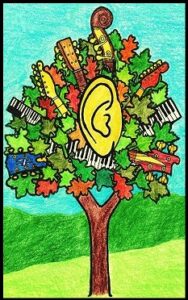 Let’s put to rest the single most troublesome and pervasive misconception about learning a musical instrument.
Let’s put to rest the single most troublesome and pervasive misconception about learning a musical instrument.
It’s a myth that you have to read music to learn to play piano, guitar or bass.
Most teachers won’t take you as a student unless you learn to read music, but many people have learned to play guitar, piano and bass at a professional level without learning to read music. Many Grammy-winning instrumentalists have been non-readers. For musicians who play modern styles like rock, country, pop and blues,reading staff notation is optional. Staff notation isn’t used in the production of most rock and country music. There are a lot of wage-earning players out there who don’t read music.
I’m not against reading music. But for now, we’re looking at the narrow question of whether reading music is necessary in order to learn to play guitar, piano or bass. And the answer to that narrow question is, “No.”
This is an important point, because many music teachers, including non-classical teachers, over-emphasize reading music at the expense of learning other skills which are more relevant to the overall goal of “learning to play.” Many teachers monopolize every last bit of lesson time with reading music.
You can point to all of the benefits of reading music, but the fact is that many excellent musicians are non-readers. For instance, Paco de Lucia, the world-renowned flamenco guitarist, says he never worked with written music. Flamenco is one of the most complicated and demanding of all guitar styles. Many famous rock players, like Eric Clapton, don’t read music. The fact is many famous recording artists can’t read the sheet music to their own songs. It’s time for modern music teachers to redefine the concept of “musical literacy” in light of how modern musicians create and perform.
Modern music styles rely heavily on spontaneous interpretation, and sometimes on outright improvisation, by the individual musicians. It’s a completely different working style from playing in an orchestra. In future posts I will discuss the differences in working styles between classical and modern musicians.
When I talk about modern music styles, I use rock and country as the main examples, because they are the commercial drivers of the music business today. I use “rock and country” as a shorthand to also include related styles like blues, pop, Motown, R&B, reggae, ska, zydeco, etc. Many jazz musicians use working methods similar to those of rock and country players. But because jazz is so diverse, it’s hard to generalize about the working styles of jazz musicians, especially with regard to reading music.
The most basic choice you have when you’re starting lessons is whether you want classical training, or training oriented to modern music. If you don’t have a specific interest in classical music, then you are better off learning with a modern approach that emphasizes ear-training, musical concepts, and developing strong technique on your instrument.
© 2019, 2020 by Gregory Varhaug